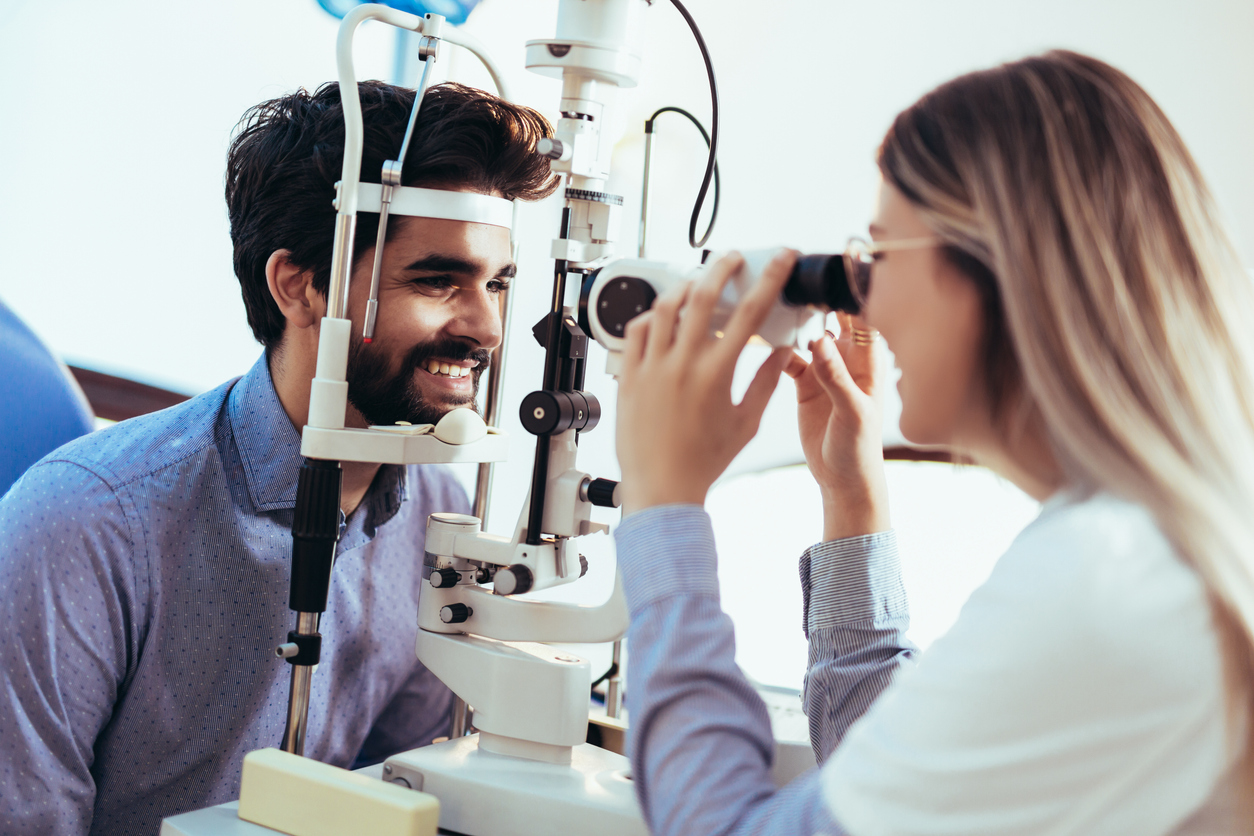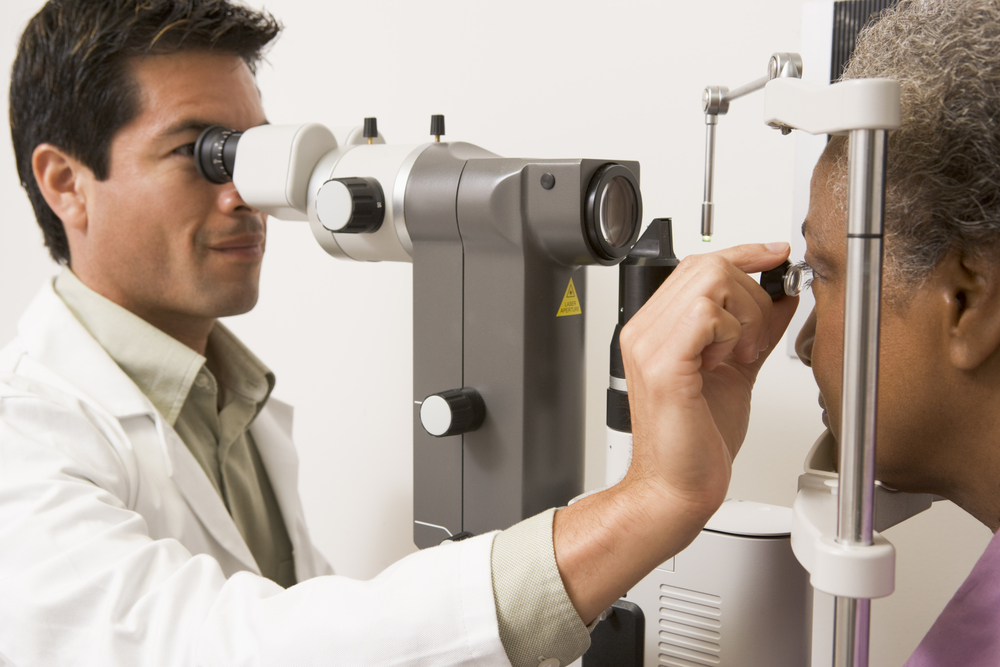The Comprehensive Eye Exam: What to Anticipate During Your Visit to the Eye Physician
A see to the eye physician for an extensive eye examination is greater than a regular examination; it is a critical action in protecting your visual wellness. From the initial conversation of your medical history to the accuracy of the visual skill examination, each part of the examination offers a particular function. What exactly takes place during the eye health evaluation, and how does it affect the prescription procedure? Recognizing these aspects is necessary for those that wish to preserve ideal vision. As we explore each component, the importance of follow-up referrals will certainly likewise end up being clear.
First Consultation
The preliminary examination throughout an eye test functions as an essential foundation for recognizing an individual's aesthetic health and wellness demands. This phase sets the tone for the whole assessment process, permitting the optometrist to collect essential information concerning the person's medical background, way of life, and specific vision concerns. By diligently assessing any type of pre-existing problems, medications, or previous surgical treatments, the eye treatment professional can customize the exam to address individual requirements effectively.

Additionally, the first appointment is an opportunity for people to voice any kind of issues or questions, fostering a collective partnership with their doctor. This interaction not only guarantees that the patient feels informed and comfortable yet likewise encourages them to participate actively in their eye health and wellness administration. Collectively, these conversations make it possible for the eye doctor to devise a customized exam plan, making certain ideal care and specific medical diagnosis.
Aesthetic Acuity Examination
Beginning the core components of an eye assessment, the aesthetic acuity examination is created to examine the intensity and quality of an individual's vision. This essential examination assists determine how well a person can determine letters or signs at a standard distance, typically utilizing a Snellen chart (Eye Doctor). The chart consists of rows of letters that lower in dimension from top to bottom, with the person placed at a normal range of 20 feet
Throughout the examination, the client is asked to cover one eye and review aloud the tiniest line of letters they can see plainly. This process is repeated for the various other eye. The outcomes are taped as a portion, with 20/20 vision suggesting regular aesthetic acuity-- where the person can see at 20 feet what an individual with normal vision can see at that distance.
The aesthetic acuity examination also identifies potential refractive errors such as nearsightedness, hyperopia, or astigmatism, which may require rehabilitative lenses. By establishing a baseline of aesthetic efficiency, the examination is an indispensable diagnostic device that helps the eye care expert in creating an appropriate treatment plan customized to the client's one-of-a-kind aesthetic requirements.
Eye Health Assessment
Adhering to the aesthetic acuity examination, a comprehensive eye health and wellness evaluation is conducted to guarantee the general well-being of the eyes. This vital sector of the eye exam entails a comprehensive assessment of both the external and internal frameworks of the eye.
Next, attention changes to the interior structures. Via making use of ophthalmoscopy or fundus digital photography, the retina, optic nerve, and capillary are meticulously reviewed. This action is essential for identifying conditions such as retinal detachment, glaucoma, or diabetic person retinopathy. In a lot of cases, student dilation is performed to improve visibility of the inner eye structures, although this may cause short-lived light sensitivity for the person.
Additionally, intraocular pressure is measured to screen for glaucoma risk. This is typically done making use of tonometry, which can spot elevated pressure degrees that could recommend possible damage to the optic nerve. Jointly, these assessments form a detailed evaluation to maintain eye health and wellness.
Refraction and Prescription
Just how does one ensure optimal vision? An important step depends on the procedure of refraction and acquiring a precise prescription. Refraction is an innovative procedure carried out by eye care experts to determine the specific lens power needed to fix refractive mistakes such as nearsightedness, astigmatism, hyperopia, and presbyopia. The objective of this treatment is to assess just how light bends as it travels through the eye, allowing the expert to establish whether rehabilitative lenses are needed for boosted visual skill.
Throughout the refraction process, Our site the person is asked to look via a phoropter, a gadget that consists of different lenses. The practitioner will methodically change these lenses and ask the patient to compare quality in between alternatives until the most effective possible vision is attained. This treatment is crucial in crafting an accurate prescription that defines the appropriate lens power for glasses or contact lenses.
The prescription originated from this treatment not only maximizes vision however also functions as a structure for selecting suitable restorative glasses. It is important to ensure that prescriptions are consistently upgraded, as adjustments in vision can happen gradually, emphasizing the significance of regular eye assessments. This thorough focus to information assists preserve clear, comfortable vision in daily life.
Follow-Up Recommendations

Throughout a follow-up browse through, the eye medical professional will certainly carry out a series of tests to evaluate visual acuity and look for any modifications in vision that could require an upgrade to the prescription. In addition, the follow-up gives a chance to discuss any kind of pain or issues experienced with current eyewear. Adjustments can be made to ensure convenience and effectiveness, whether with lens modification or frame modifications.
For individuals with recurring conditions such as glaucoma, diabetes-related web eye issues, or macular deterioration, even more constant follow-ups may be required. These visits are critical for managing and possibly reducing the progression of eye condition. Following these referrals can significantly add to maintaining visual wellness and stopping long-term problems.
Conclusion
The thorough eye test is an important process for preserving aesthetic wellness, including a thorough evaluation of case history and vision concerns. Secret parts consist of the aesthetic acuity test, which assesses vision clarity, and the eye health and wellness assessment, which checks out the total condition of the eyes. Refraction examinations aid determine the accurate lens prescription required for optimum vision modification. Follow-up suggestions provide advice for recurring eye care, ensuring that any kind of prospective concerns are resolved immediately and properly.
A visit to the eye physician for an extensive eye exam is even more than a routine check-up; it is an essential action in browse this site protecting your aesthetic wellness.Kicking off the core elements of an eye examination, the aesthetic skill examination is made to analyze the sharpness and quality of a person's vision.Adhering to the aesthetic skill examination, a detailed eye health evaluation is carried out to make certain the general health of the eyes. These check outs allow the eye care specialist to check changes in vision, upgrade prescriptions, and examine the general health and wellness of the eyes. Trick components consist of the visual skill test, which assesses eyesight clarity, and the eye wellness evaluation, which takes a look at the general problem of the eyes.